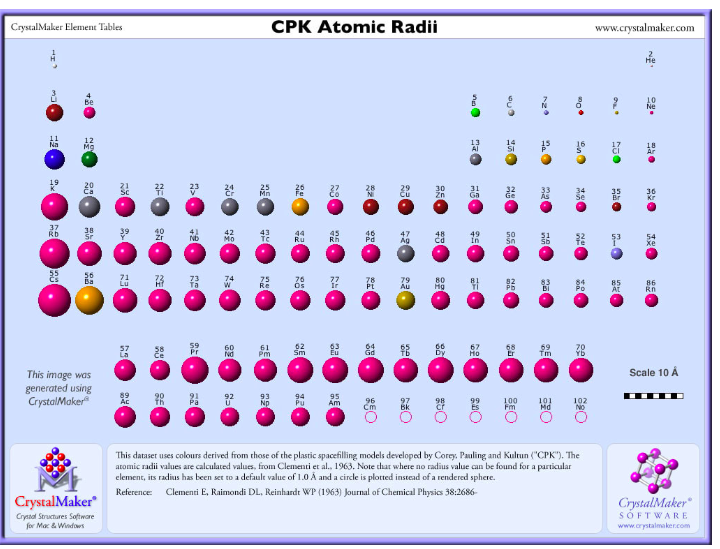

Let’s break down the trend into its period and group trends. Atoms decrease in size across the period and increase in size down the group. Atomic Radius Trend on the Periodic TableĪtomic radii increase toward the bottom left corner of the periodic table, with Francium having the largest atomic radius. Thus the atomic radius is measured as shown in the diagram below. This is because the borders of orbitals are quite fuzzy, and they also change under different conditions. While your initial thought may have been to measure the distance from the center of an atom’s nucleus to the edge of its electron cloud, this is inaccurate and not feasible.

The atomic radius is measured as half the distance between two nuclei of the same atoms that are bonded together. However, when we look at the pattern of ionization enthalpy in groups, we can see that it falls from top to bottom in a group.Let’s discuss the definition of the atomic radius, also called atomic size, and the atomic radius trend on the periodic table. As a result, ionization energy often increases over the periodic table. As a result, as the size of an atom diminishes, so does the attractive attraction between the nucleus and the outermost electrons. While the boiling temperatures of nonmetals grow from top to bottom in a periodic table group.Ītomic radius shrinks as a period progresses from left to right. Metal boiling points fall gradually from top to bottom in a group. Tungsten has a high melting point when compared to other metals. Boron has a high melting point when compared to other semi-metals. Among metals, carbon has a high melting point. Non-metals, on the other hand, rise from top to bottom of the periodic table. It gets smaller as we go from top to bottom. If the link between the atoms of elements is strong, it takes a lot of energy to break the bond. The melting point is the total amount of energy necessary to convert a solid into a liquid. As a result, we can deduce that as we move left to right in a period, the reactivity of elements steadily diminishes until group thirteen, when it begins to increase. Although the reactivity of nonmetals rises as one moves from left to right over time. As the metallic character decreases from left to right, so does the reactivity. As a result, the more metallic the element is, the more electropositive it is, and the more reactive it is. Metal reactivity is determined by its electropositive nature. The nonmetallic nature of a group of periodic table elements reduces as we proceed from top to bottom. The nonmetallic property of elements grows as we move left to right across a period in the periodic table. Non – Metallic Character of The Elements.The metallic property of elements grows as we progress up the periodic table from top to bottom. The metallic property of elements reduces as we move left to right across a period in the periodic table.

The valency of elements from the same groups is the same. There is no change in valency among members of a group. Moving left to right across a period in the periodic table, valency increases first, then declines. Hydrogen, lithium, and sodium elements, for example, are all found in the first group and all have the same number of valence electrons, which is one.Īn atom’s valency is its ability to combine. It denotes that elements in the same group have the same number of valence electrons. Valence electrons remain consistent across a group.

The amount of valence electrons grows as we move left to right across a period in the periodic table. The electrons in an atom’s outermost shell are referred to as the atom’s valence electrons. The explanation for this unusual behavior is that in the case of noble gases, atomic radius relates to van der Waal’s radius, whereas in the case of other elements, it refers to the covalent radius. When compared to the preceding halogen atom, the atomic radii of inter gases rapidly increase.


 0 kommentar(er)
0 kommentar(er)
